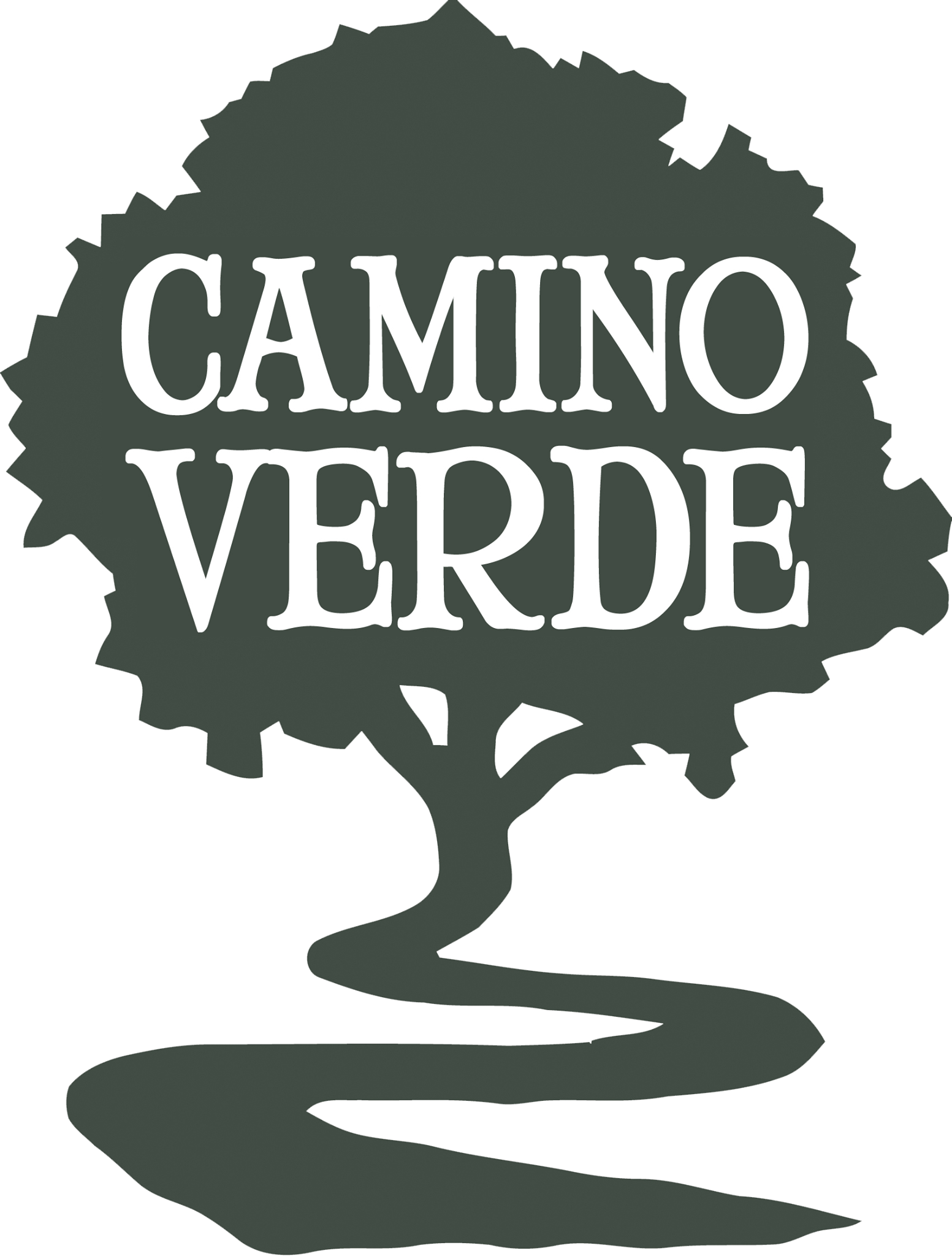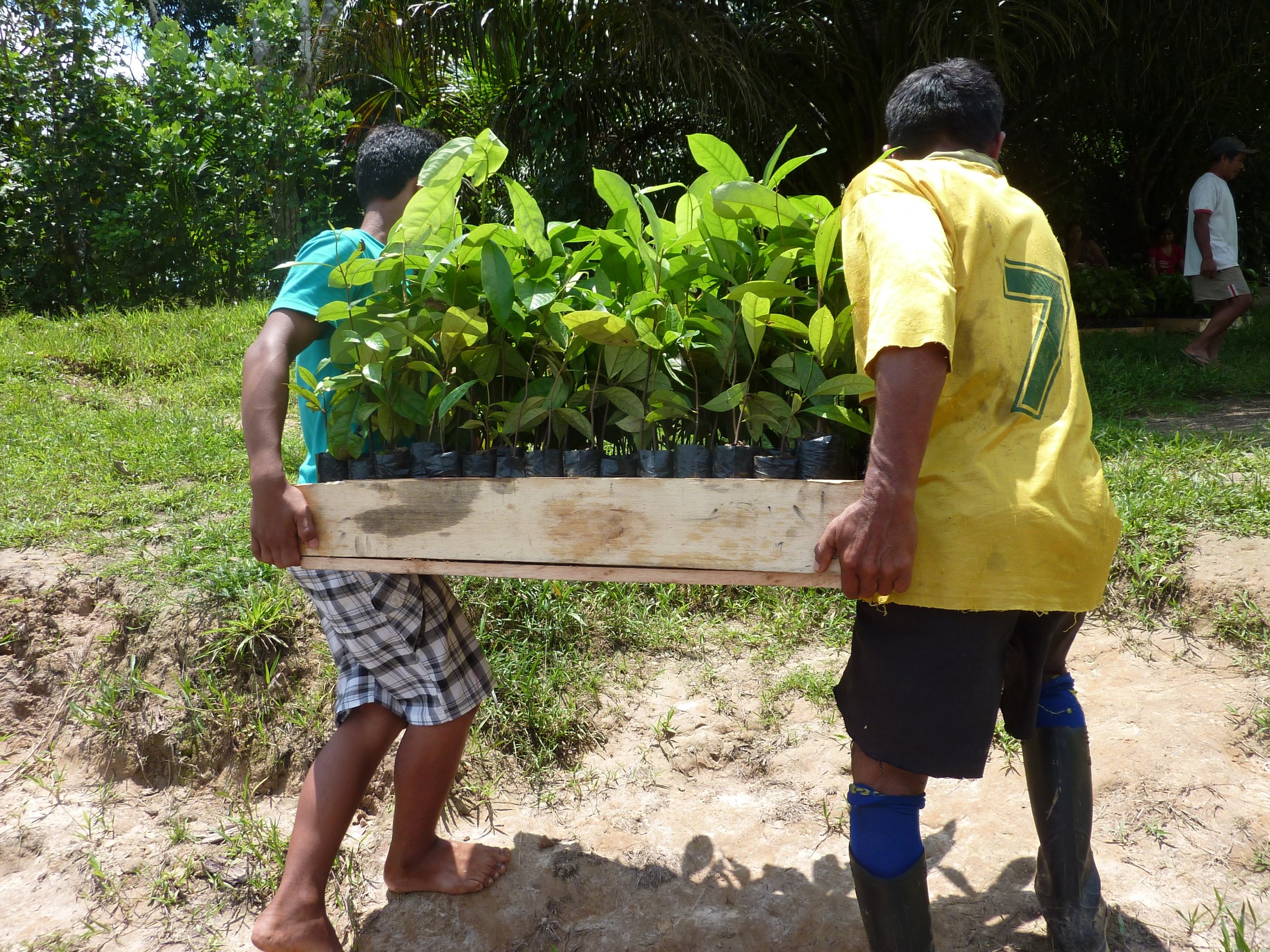Rainy Season in the Land of Rivers
The Tambopata River, Madre de Dios, Peru.
It’s the rainy season in the Peruvian Amazon, and I mean rainy. All morning the precipitation has blessed us, spritzed us, showered us. Standing ankle deep in the clay of a slippery riverbank, at this point we don’t know, don’t want to know, what is sweat and what is rain. Mud caked hands pass along an unlikely cargo – tree seedlings in their black planting bags are handed up the shore like a line of ants.
The plants are hoisted out of a large wooden canoe and passed up the steep escarpment. And passed along again. And again. Today a thousand seedlings will move through our hands, newborn trees of different species of the Amazon. It’s just a day in the life of rainforest reforestation, but today is a special day – today these trees are coming home.
A volunteer from Pennsylvania hands me the seedlings two by two, and an intern from Tennessee is next up the riverbank and receives the plants from me. She in turn hands them to a man from the Andes, working for the year in the jungle, who makes a joke to lighten the mood as the plants continue on to a young man from the Amazon and then finally to don Salomon, farmer, landowner, steward of these thousand trees. And then we do it again, hundreds more times this morning.
At the top of the bucket brigade line, Salomon inspects the new arrivals with a keen eye – after all, he’s a sort of father to these trees. A few mistreated seedlings are discarded and the plants are grouped by species, filling up the yard around Salomon’s modest jungle abode. There are enough trees here to reforest one hectare (about two and a half acres), and we’ll be back to plant them all tomorrow.
Some of the trees are for fruit, including familiar names like cacao and açaí – and less familiar ones like camu camu and inga. Others are timber trees, some day to stand a hundred feet above us. Some provide exquisite aromatic essential oils. All the species planted are native. This polyculture represents what we call an agroforestry system: a forest that we plant, that provides for us. Salomon has opted to plant this polyculture because he knows that growing trees is ultimately less work than growing annuals like corn or rice or cassava, and less destructive in the long run to the forest that surrounds and interpenetrates his farm.
On a day like today, covered in mud and soaked from head to toe, I’m reminded of the disconnect between words and their meanings. For example, listen to these words: we reforest the Amazon. We plant trees where once there was rainforest. I say these things to whoever will listen on a regular basis, and it sounds good enough. But the words don’t necessarily do a good job of describing what we actually do, what we actually did on a day like today.
Today we scrambled up and down a muddy riverbank carefully carrying delicate tree seedlings, a job no machine or robot can effectively do, a task uniquely suited for caring human hands. Today we shared jokes and encouraging words as our muscles flexed, then strained, then ached. Today we put the stubble back on a couple acres of a once forested landscape shaved bare. This is Amazon community ecology. The story of the day isn’t about the number of pounds of carbon these trees will capture over their lives, though that’s important too. The story of the day is one of sharing, of laughter, of the promise of new beginnings.
Volunteers help plant out some of this year's 10,000 tree seedlings.
This is Camino Verde - a green way back to symbiosis with nature. Hands working together to restore the Amazon, despite the challenges and the rainstorms. People returning seeds to the forest – and reaping the tenfold rewards. The ones doing the real work are these tiny plants that will turn into mighty trees. We’re just grateful to help them on their way.
This year Camino Verde will plant over 10,000 trees in the Amazon of Peru, at our reforestation center and with partner farmers like Salomon. Our work is supported and inspired by you, and we’re grateful for your interest in what we do. Thank you for investing in Amazonian restoration - please donate today.




